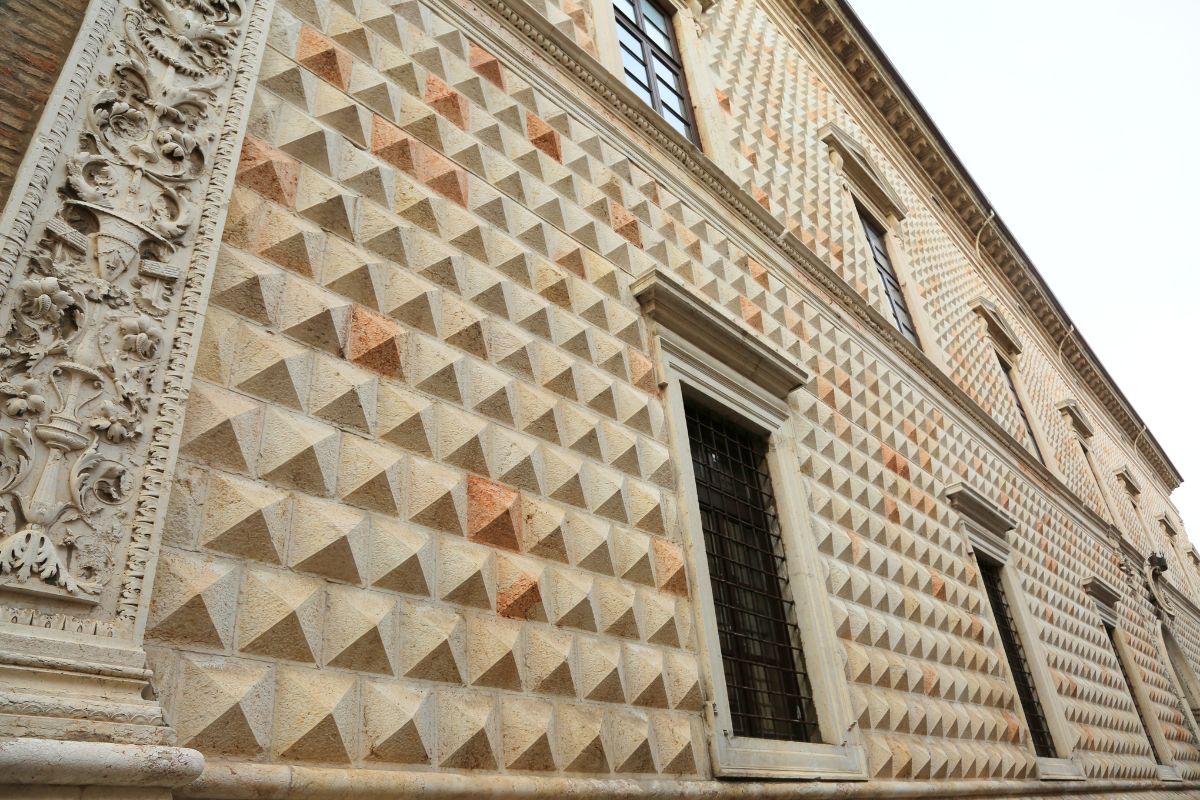Walking through the ancient streets of Ferrara, I’m struck by how this Italian Renaissance city tells two fascinating stories at once. The grand ducal palaces of the Este family stand proudly alongside one of Italy’s most significant Jewish quarters, creating a unique cultural tapestry that spans centuries.
Ferrara is the only city in Emilia-Romagna with an uninterrupted Jewish presence from medieval times to today, making it a living museum of Italian Jewish heritage.
The Este family ruled Ferrara for over three centuries, from 1240 to 1597, transforming it into a “City of the Renaissance” with magnificent architecture and artistic patronage. What makes my visits here so special is discovering how the Jewish community flourished under Este protection, creating a neighborhood that once housed 2,000 Jews.
Though today’s community numbers only about 80 people, their cultural legacy remains powerful, with the new Museum of Italian Judaism and the Shoah offering insights into 2,000 years of Jewish life in Italy.
When you wander through Ferrara’s streets, you’ll find yourself moving between these two worlds—ducal grandeur and Jewish heritage—that somehow complement each other perfectly. The city feels like a living history book, with buildings that my guide described as “made from Jewish stones,” referring to the deep integration of Jewish culture into Ferrara’s identity.
I’ve found that exploring both the magnificent Este palaces and the intimate Jewish quarter gives you the most complete picture of this remarkable Renaissance city.
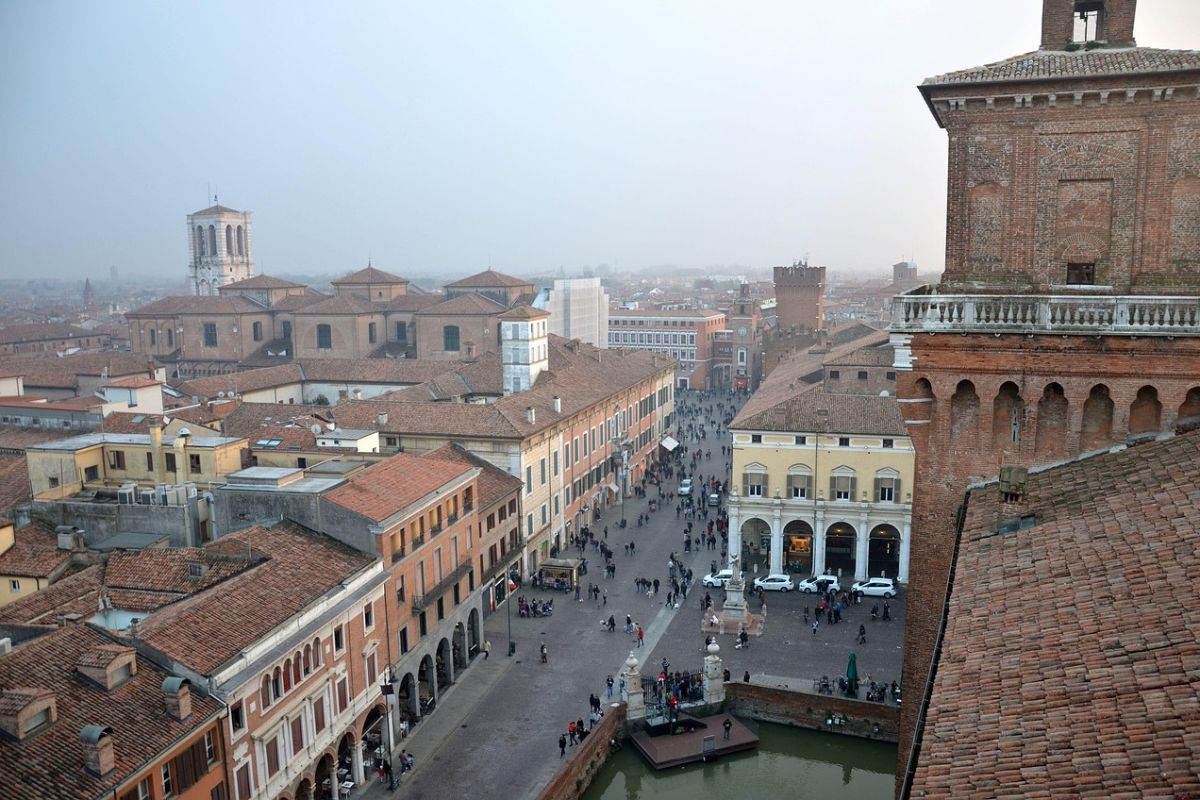
Exploring the Este Family Legacy
The Este family ruled Ferrara from 1240 to 1597, transforming it from a medieval town into a Renaissance jewel. Their vision and patronage created a cultural center that attracted the greatest minds and artists of the era.
Alfonso I and the Court of Ferrara
Walking through the massive Castello Estense, I’m struck by how Alfonso I d’Este shaped Ferrara’s golden age. As duke from 1505 to 1534, he created one of Europe’s most splendid courts.
Alfonso married the famous Lucrezia Borgia, bringing additional prestige and political connections to Ferrara. Their court became a magnet for intellectuals, poets, and musicians.
I find his greatest achievement was balancing military prowess with artistic patronage. Alfonso’s studiolo (private study) contained masterpieces by Titian and Bellini. His passionate support for the arts established Ferrara as a cultural powerhouse during the Italian Renaissance.
Renaissance Influence and Este Patronage
The Este family transformed Ferrara through ambitious urban planning and artistic patronage. Their vision is evident as I stroll through the perfectly gridded streets of the Herculean Addition.
Under Este’s rule, Ferrara’s court culture flourished with literature, music, and theater. The family attracted luminaries like Ariosto and Tasso, whose epic poems were written under Este patronage.
The family’s collections were legendary. Tapestries, manuscripts, and paintings filled their residences. Their patronage extended to architecture too, with palaces and churches displaying the distinctive Ferrarese Renaissance style.
What makes their legacy unique is how they blended cultural refinement with political power. The Este made art and culture central to their identity and rule.
Borso d’Este’s Artistic Vision
Borso d’Este, who ruled from 1450 to 1471, holds a special place in Ferrara’s cultural history. When I visit the Schifanoia Palace, I’m amazed by the famous “Months” frescoes he commissioned – a remarkable cycle depicting court life and astrological symbols.
Borso was the first Este to receive the title of Duke of Ferrara from Pope Paul II. His reign marked the transition from medieval governance to Renaissance splendor.
Unlike other Renaissance rulers, Borso emphasized peace and prosperity over military conquest. His artistic vision extended beyond paintings to urban development and manuscript illumination.
The Bibbia di Borso (Borso’s Bible) stands as his crowning achievement – a lavishly illustrated manuscript I consider among Italy’s greatest Renaissance treasures. His cultural contributions helped establish the Este reputation for artistic patronage.
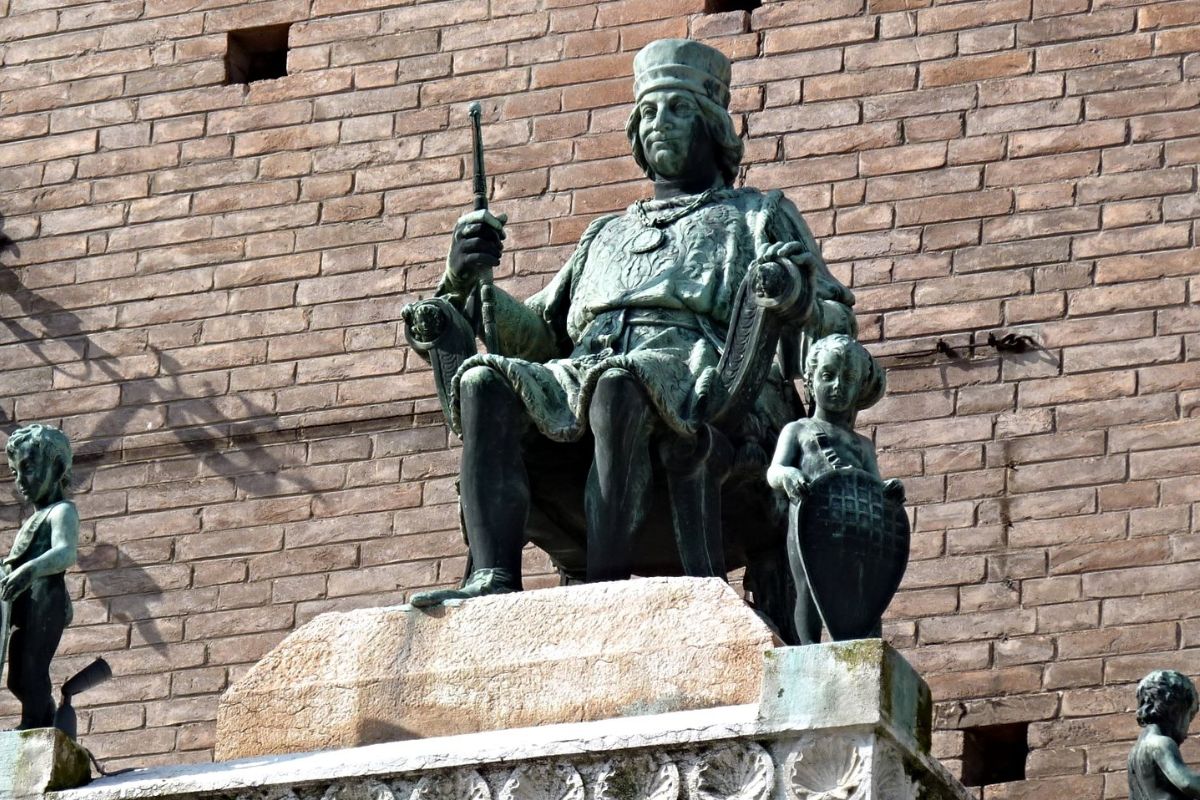
The Architectural Tapestry of Ferrara
Ferrara’s skyline tells the story of powerful noble families, especially the Este dynasty, who transformed this Po River settlement into a Renaissance jewel. The city’s buildings blend medieval foundations with Renaissance innovations, creating a unique architectural identity that still captivates visitors today.
Ducal Palaces and Noble Estates
Walking through Ferrara, I’m always struck by the magnificent Palace of Diamonds with its distinctive diamond-shaped marble blocks on its façade. This architectural marvel, commissioned by Sigismondo d’Este, exemplifies how the Este family used architecture to display their power and refined taste.
The Palace of Ludovico il Moro stands as another testament to noble ambition, with its imposing presence and elegant proportions. I’ve noticed how these palaces aren’t isolated monuments but form an integrated urban fabric.
Public and private buildings throughout the city share design elements that create visual harmony while allowing individual expression. The Este family’s patronage encouraged architectural innovation that balanced practicality with beauty.
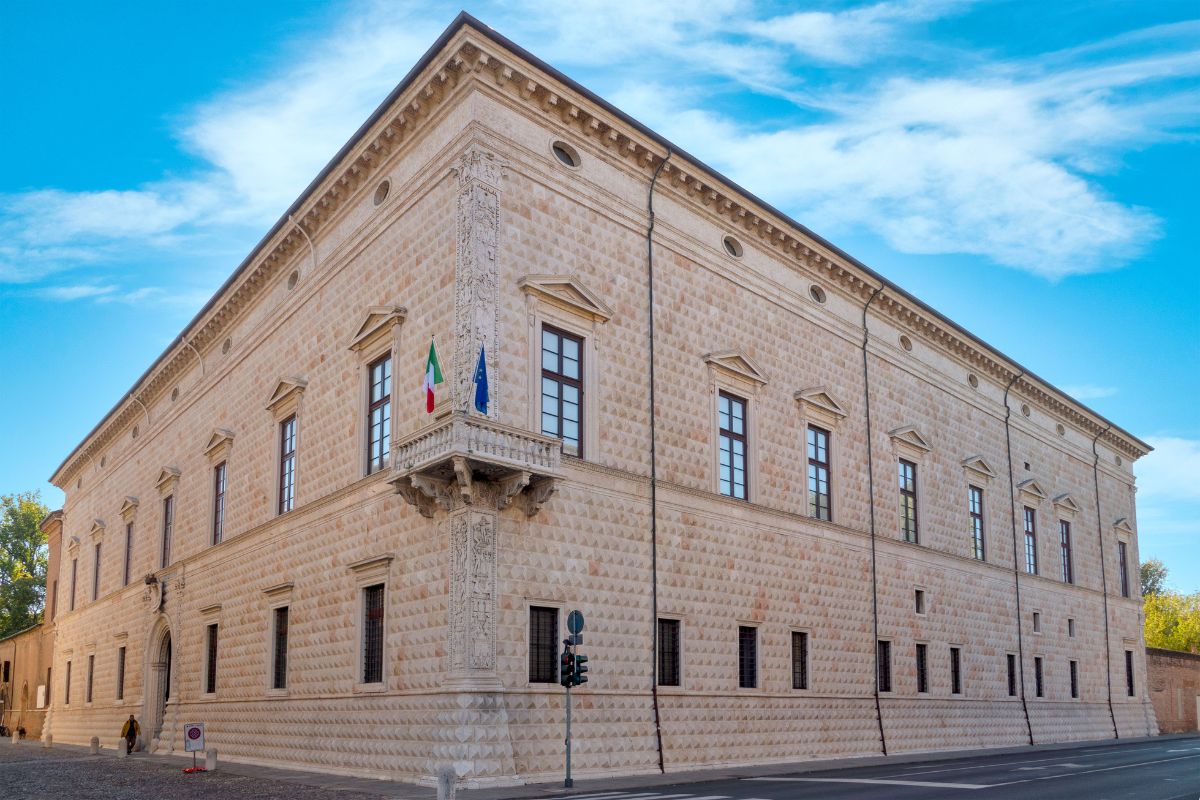
Gothic Flourishes and Renaissance Overlays
Ferrara fascinates me with its architectural time travel. Medieval Gothic elements—pointed arches, ribbed vaults, and soaring vertical lines—appear alongside Renaissance features characterized by symmetry and classical references.
The city’s cathedral showcases this blend beautifully. Its Gothic façade with intricate carvings stands in conversation with nearby Renaissance buildings that emphasize horizontal lines and mathematical proportions.
I’ve spent hours admiring how Ferrara’s architects mastered the transition between styles. They didn’t simply replace Gothic with Renaissance designs but created a dialogue between them. This layering of styles gives Ferrara buildings their unique character and depth.
Castello Estense: A Fortress of Splendor
The Castello Estense dominates Ferrara’s center, its red brick towers and moat making it impossible to miss. I remember my first glimpse of this 14th-century fortress-palace—both intimidating and inviting.
Originally built as a defensive structure after a popular uprising, the castle evolved into the symbolic heart of Este power. Its four massive towers anchor the corners, while the interior reveals the dual nature of this building: military stronghold and refined noble residence.
Inside, I discovered rooms transformed by Renaissance sensibilities—frescoed ceilings, marble fireplaces, and elegant courtyards. The Orange Garden offers a peaceful retreat that contrasts with the fortress exterior.
The castle embodies Ferrara’s identity as a city where military pragmatism met artistic ambition, creating a cultural legacy that earned its UNESCO World Heritage designation.
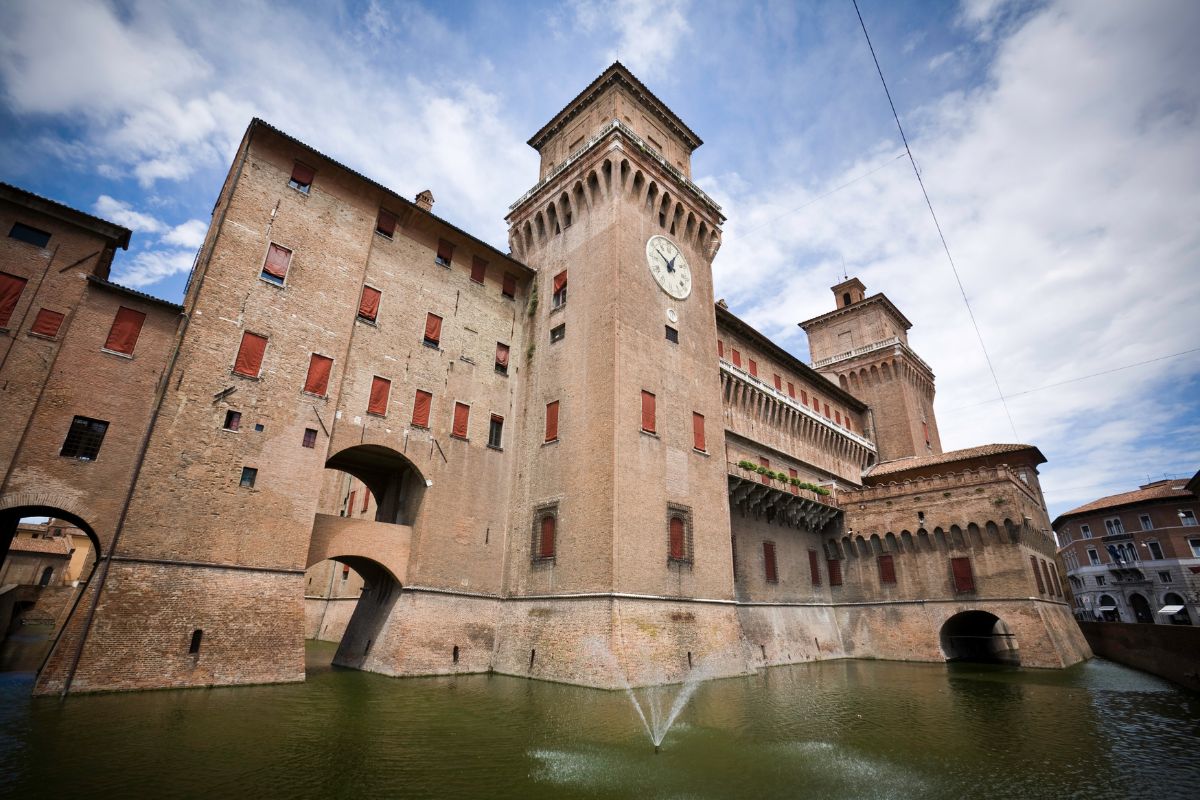
The Rich Jewish Heritage of Ferrara
Ferrara holds a remarkable Jewish legacy that spans centuries, with roots dating back to at least the 13th century. The city’s Jewish history is a testament to cultural resilience, religious identity, and the unique protection offered by the powerful Este family.
A Storied Community in Renaissance Italy
Walking through Ferrara, I can feel the Jewish influence that has shaped this Renaissance city. The Jewish presence here dates back at least 800 years, when the community found welcome while facing persecution elsewhere in Europe. During the Renaissance, Ferrara became a haven for Jews fleeing Spain and Portugal after the 1492 expulsion.
What makes Ferrara unique is how the Jewish community thrived under Este patronage. I’ve learned that Jewish merchants, doctors, and scholars contributed significantly to the city’s cultural and economic growth.
The community reached its golden age in the 16th century when Duke Ercole II d’Este invited Sephardic Jews to settle here. Their impact on banking, trade, and intellectual life transformed Ferrara into a center of Jewish learning and culture.
Synagogues and Ghettos: Monuments of Remembrance
The historic Jewish Ghetto, established in 1627, remains one of Ferrara’s most poignant areas. I found its narrow streets and tall buildings create an atmosphere that speaks of both confinement and community resilience.
Three synagogues once stood within the ghetto walls, though most were later destroyed. The remaining synagogue architecture reflects the unique Italian-Jewish style that blended local aesthetics with Jewish traditions.
The Jewish Cemetery offers another powerful connection to the past. Walking among centuries-old tombstones, I’m struck by inscriptions that tell stories of families who lived, worked, and died in Ferrara across generations.
Today, the Museum of Italian Judaism and the Shoah (MEIS) stands as a significant monument. It explores 2,000 years of Jewish-Italian history and the complex relationship between Judaism and Christianity in Italy.
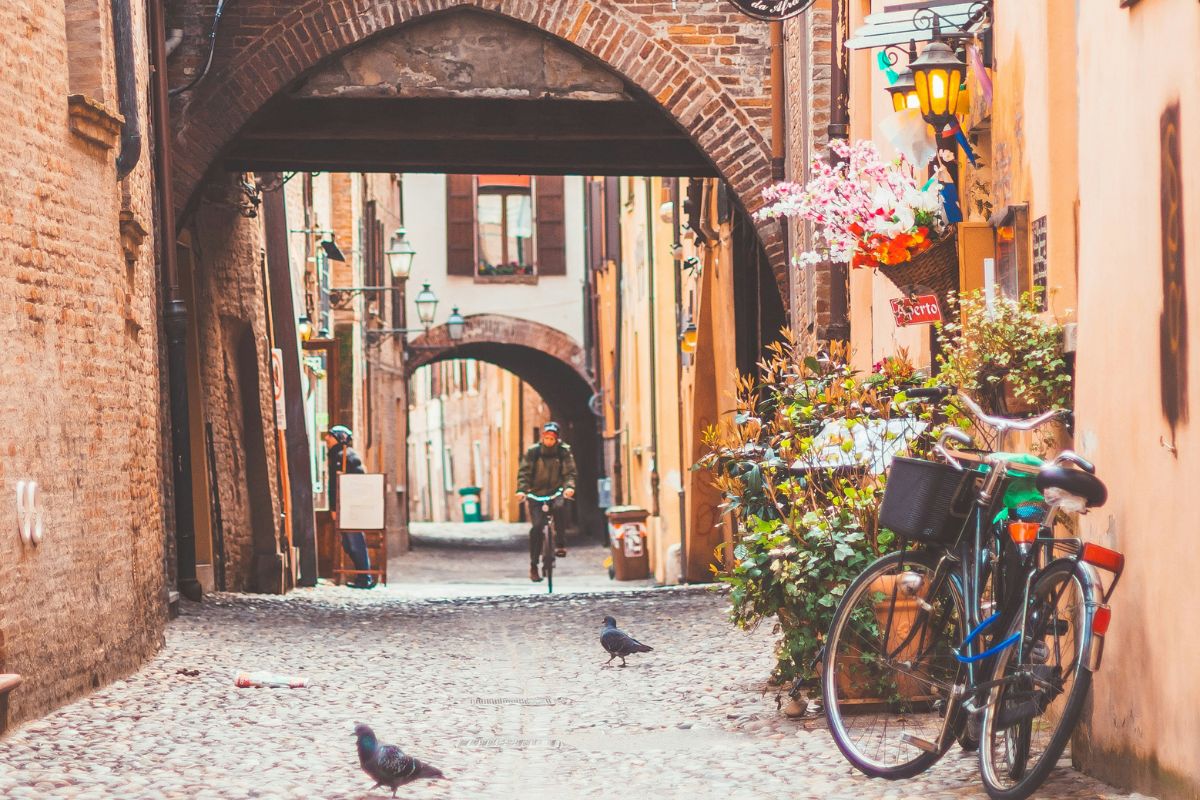
Cultural Intersections and Este Protection
The Este family’s protection of Ferrara’s Jewish community created a unique environment where cultural exchange flourished. Under their rule, Jewish scholars engaged with Christian humanists in remarkable intellectual dialogue.
I’ve discovered that Jewish printers published important works in Hebrew, creating a literary legacy that spread throughout Europe. Jewish physicians served the ducal court, bringing advanced medical knowledge to Ferrara.
Even during difficult periods, when restrictive policies were enforced elsewhere, the Este family often moderated these regulations in Ferrara. This relative tolerance created what some historians call a “city made from Jewish stones” – a place where Jewish contributions became fundamental to Ferrara’s identity.
The community’s cultural influence extended to art, music, and cuisine. Today, I can still taste this heritage in traditional Ferrarese dishes that bear subtle Jewish influences from centuries of cultural exchange.
Artistic Endeavors and Cultural Flourishes
Ferrara’s artistic legacy stands as one of the most distinctive in Renaissance Italy, blending local traditions with innovative approaches. The city’s creative atmosphere flourished under Este’s patronage, creating a unique cultural identity that set it apart from other Italian courts.
The Ferrara School of Painting
The Ferrara School emerged as a powerhouse of artistic innovation during the Renaissance. Dosso Dossi, one of its most celebrated figures, created works that captured the court’s imaginative spirit. His distinctive style blended vivid colors with dreamlike landscapes that reflected Ferrara’s literary sensibilities.
Lorenzo Costa and Francesco del Cossa contributed to the school’s reputation through their work in the Palazzo Schifanoia. The famous Hall of the Months features stunning frescoes that combine astrological symbols with scenes of court life.
When I visited the Palazzo dei Diamanti, I was struck by how the museum’s collection showcases the evolution of Ferrarese painting. The works reveal a fascinating progression from Gothic influences toward more naturalistic Renaissance ideals while maintaining a uniquely local character.
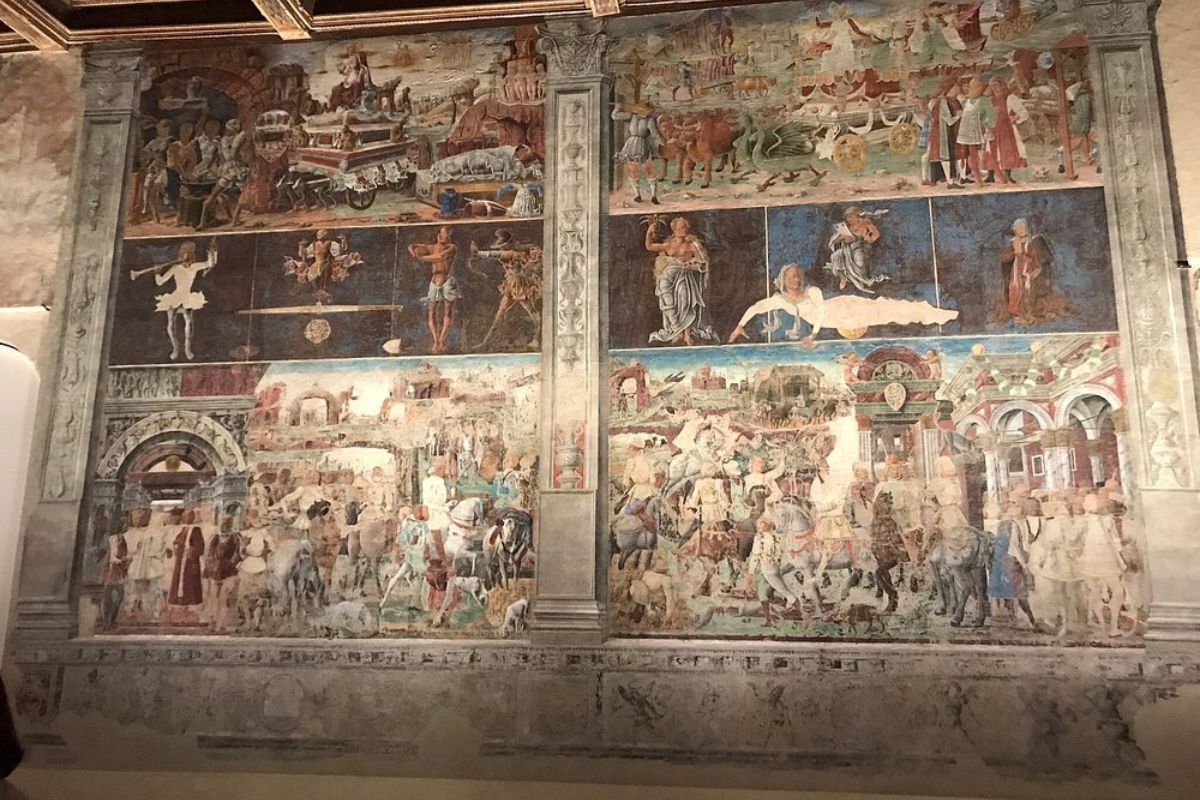
Literary and Musical Innovations
Ferrara’s literary scene rivaled its visual arts in importance and influence. The court attracted luminaries like Ludovico Ariosto, whose epic poem “Orlando Furioso” was composed under Este patronage. Torquato Tasso likewise created his masterpiece “Jerusalem Delivered” while residing in the city.
The musical life at court was equally vibrant. Walking through the ducal palace, I could almost hear echoes of the performances that once filled these spaces. Josquin Desprez, perhaps the greatest composer of the Renaissance, spent time at the Ferrara court creating sublime sacred music.
Court festivities regularly featured elaborate musical performances. The Este family maintained a chapel choir of exceptional quality and invited prominent musicians from across Europe to perform and teach.
Patronage and Progress in the Arts
The Este family’s commitment to artistic patronage transformed Ferrara into a cultural powerhouse. Duke Ercole I d’Este established traditions of support that his successors enthusiastically continued, funding everything from architectural projects to musical compositions.
I’ve found that exploring the ducal palaces reveals how deeply the arts were integrated into daily court life. Libraries collected precious manuscripts, while noble chambers were adorned with tapestries and paintings commissioned specifically for these spaces.
Women played a significant role in Ferrara’s cultural development. Duchesses like Eleonora d’Aragona and later Isabella d’Este were influential patrons who shaped the artistic direction of the court through their sophisticated tastes and education.
Jewish intellectuals contributed meaningfully to this cultural exchange, particularly in areas of medicine, philosophy, and literature, creating a unique dialogue between traditions.
Navigating the City’s Historical Quarters
I recommend starting your exploration at the imposing Estense Castle, the symbol of Ferrara’s ducal past. From there, wander through the medieval streets toward the Cathedral. Take time to absorb the architectural details that earned the city its UNESCO World Heritage status.
The Jewish Quarter deserves special attention. I spent hours exploring its narrow lanes, discovering the historic synagogue, and learning about the community that thrived here for centuries. The Jewish Cemetery and Museum offers moving insights into Ferrara’s Jewish heritage.
For the best experience, rent a bicycle – Ferrara is known as Italy’s “city of bicycles.” I found this the perfect way to navigate the cobbled streets and city walls that encircle the old town.
Don’t miss the Palace of Diamonds with its distinctive facade. Its unique architectural style represents the height of Renaissance innovation in urban design.
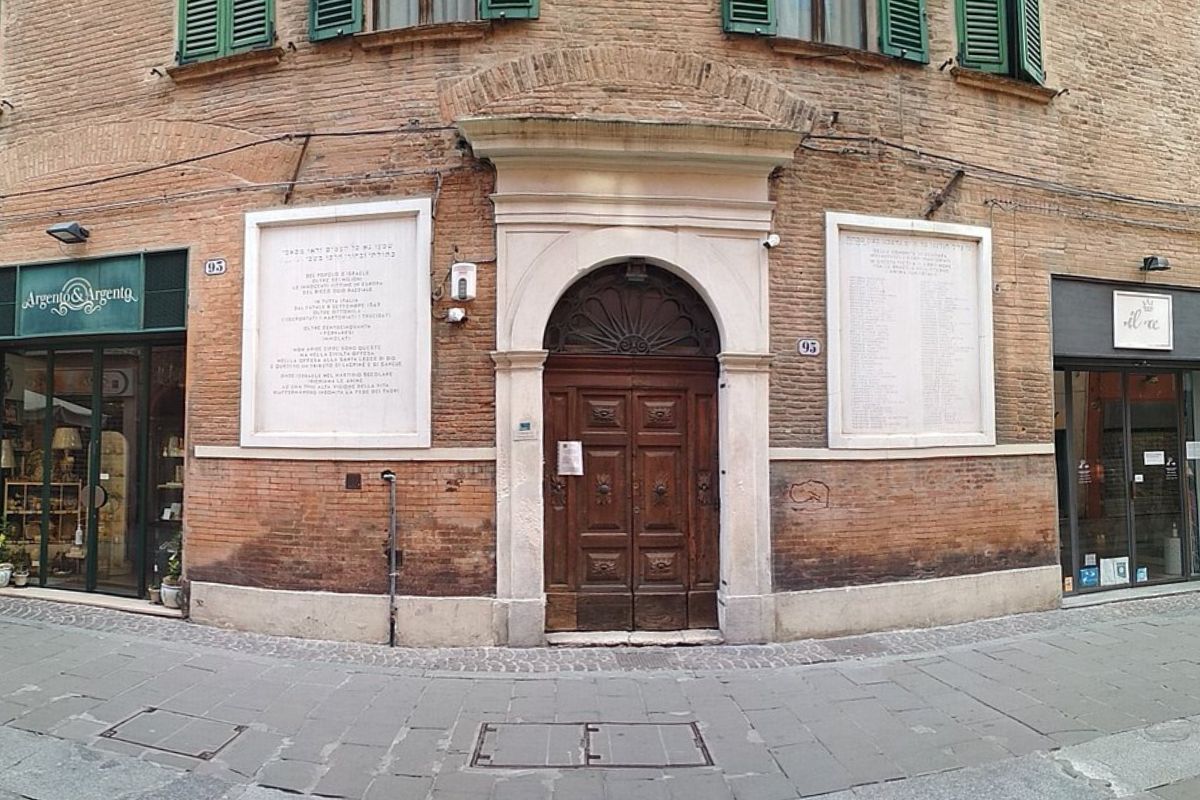
Contemporary Delights and Fashionable Finds
Beyond its historical treasures, Ferrara boasts a sophisticated modern scene. Via Mazzini and Corso Ercole I d’Este offer delightful shopping experiences. You’ll find everything from Italian fashion boutiques to artisanal craft shops where I discovered unique souvenirs.
For culinary adventures, the city’s trattorias serve exceptional local specialties. I recommend trying cappellacci di zucca (pumpkin-filled pasta) and salama da sugo, washed down with local Emilia-Romagna wines.
The university district brings youthful energy to this ancient city. Here, contemporary cafés and wine bars sit alongside historical buildings, creating a fascinating juxtaposition of old and new.
Art lovers should visit Palazzo dei Diamanti’s modern exhibitions. During my visit, they featured contemporary Italian artists alongside Renaissance masters, showcasing how Ferrara continues to evolve culturally.
Annual Events and Festivals to Bookmark
Ferrara’s calendar brims with cultural events that showcase its heritage and vibrant community spirit. The Palio of Ferrara in May is the oldest Palio in Italy, predating Siena’s famous horse race. I was mesmerized by the medieval costumes and flag-throwing competitions.
The Buskers Festival transforms the city each August. Street performers from around the world fill the historical center with music, theater, and circus arts. It’s an electric atmosphere not to be missed!
September brings the Ferrara Balloons Festival, Europe’s largest hot air balloon gathering. Watching hundreds of colorful balloons rise above Renaissance palaces created some of my most magical Italian memories.
For film enthusiasts, the Ferrara Film Festival in March showcases international cinema against the backdrop of the city’s stunning architecture. It’s smaller than Venice’s famous festival but offers a more intimate experience.

Preservation and Promotion of Ferrara’s Treasures
Ferrara’s cultural heritage is protected through dedicated conservation efforts and educational initiatives that bring its Renaissance splendor to life. The city’s UNESCO World Heritage status reflects the importance of preserving its unique cultural mosaic for future generations.
Challenges and Triumphs in Heritage Conservation
Walking through Ferrara’s historic center, I’m always struck by the careful restoration work evident throughout the city. After severe earthquake damage in 2012, local authorities launched ambitious recovery projects to save iconic structures like the Estense Castle.
The Archivio di Stato houses thousands of precious documents that tell the story of Ferrara’s Jewish community and ducal history. These fragile antiquities require specialized preservation techniques to combat humidity and natural deterioration.
Conservators are working meticulously on crumbling frescoes, using modern technology while respecting original techniques. Their dedication ensures these treasures remain intact for visitors like us to appreciate.
Community involvement has been crucial too. Local families often donate heirlooms and participate in fundraising campaigns supporting preservation efforts.
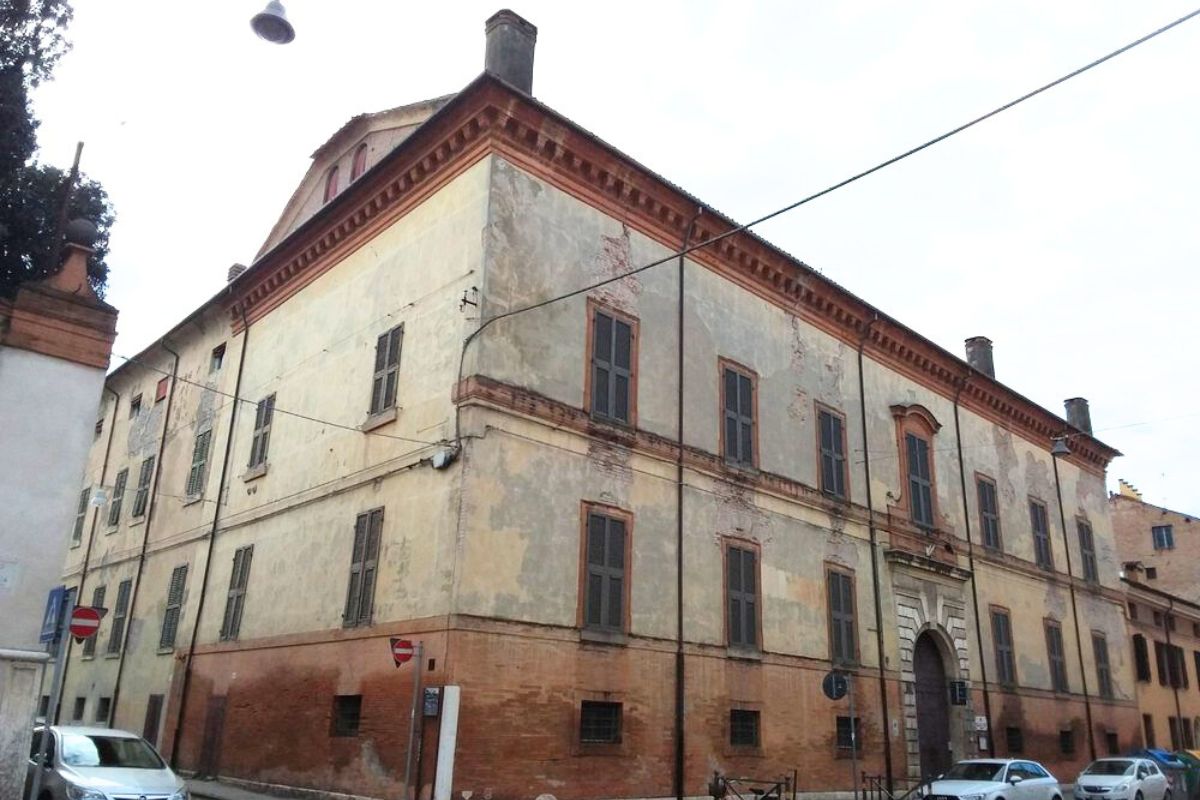
The Role of Museums and Academies
The Biblioteca Estense amazes me with its collection of Renaissance music manuscripts and illuminated texts. Their digitization project, similar to Project Gutenberg, makes these rarities accessible to scholars worldwide while protecting the originals.
I spent an afternoon at a workshop hosted by Ferrara’s Academy of Fine Arts. Here, students learn traditional restoration techniques. These young conservators will ensure the city’s artistic legacy continues.
Museums throughout the city don’t just display artifacts—they tell stories. Interactive exhibits at the Jewish Museum transport visitors back to the vibrant 15th-century community life.
Special events connect past and present cultural expressions. I attended a concert featuring music from the Este court performed on period instruments. These experiences bring history alive in meaningful ways.
Local schools partner with museums for educational programs, ensuring young residents understand and value their exceptional heritage.
Frequently Asked Questions
Ferrara’s rich heritage is a tapestry woven from Jewish culture and ducal influence. These questions explore the fascinating connections between these worlds and how they shaped this remarkable Italian city.
The Jewish community played a vital role in Ferrara’s intellectual landscape during the Renaissance. Under the protection of the Este family, particularly Duke Ercole I and Duke Ercole II, Jewish scholars and artists flourished alongside Christian humanists.
Jewish printers established workshops that produced important texts in Hebrew, Italian, and Latin. These publications circulated throughout Europe, positioning Ferrara as a center of learning and cultural exchange.
The community’s physicians, mathematicians, and philosophers engaged in dialogue with Renaissance thinkers, contributing to advances in medicine, astronomy, and philosophy. This intellectual cross-pollination created a uniquely tolerant environment unusual for its time.
The Palazzo dei Diamanti stands out with its facade of over 8,500 pyramid-shaped marble blocks that create a dazzling diamond pattern. This distinctive design reflects the Este family’s wealth and artistic patronage while creating an optical illusion as light plays across the surface.
The Castello Estense’s moat and drawbridges demonstrate Ferrara’s transition from medieval fortress to Renaissance palace. The red brick structure with its four imposing towers served both defensive and ceremonial purposes.
Inside the palaces, I’m always struck by the elaborate ceiling frescoes depicting classical mythology and Este family triumphs. These artistic programs communicated ducal power and humanistic values to visitors and citizens alike.
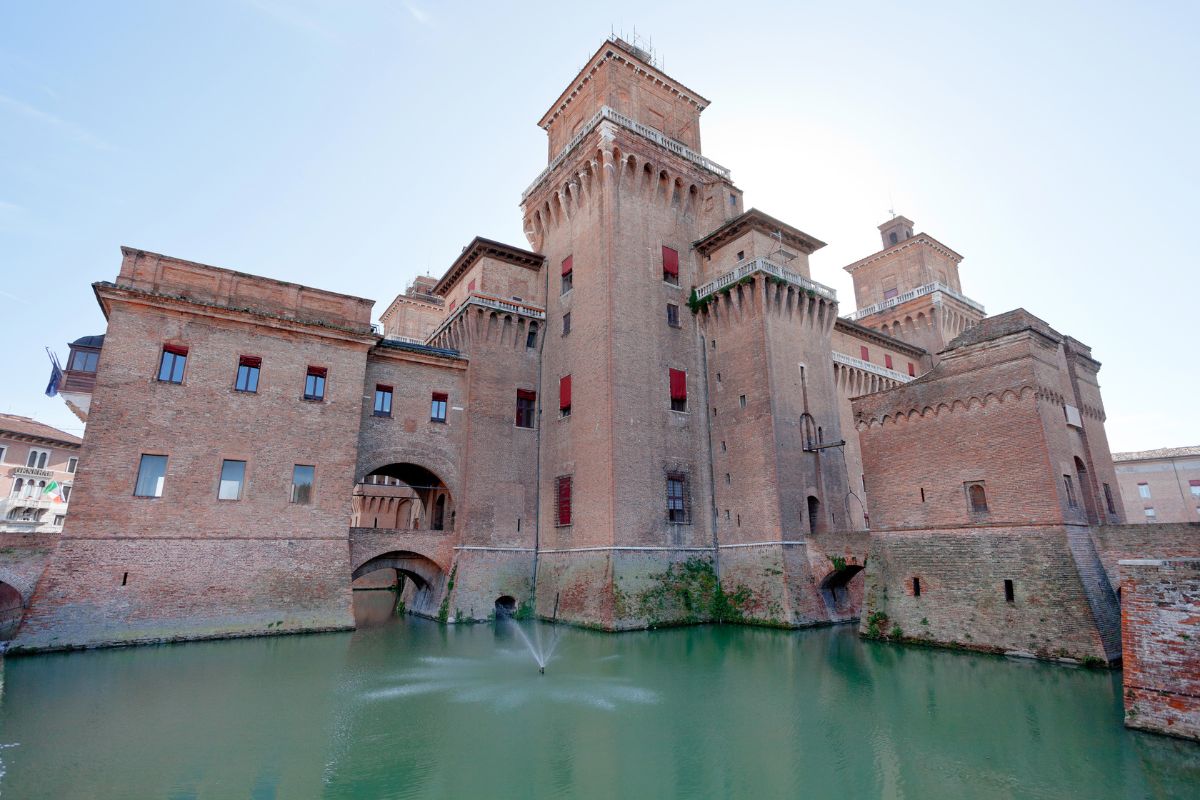
The Via Mazzini forms the heart of Ferrara’s former ghetto, where the narrow streets and tall buildings create an intimate atmosphere. Along this route, I’ve discovered subtle markers like the indentations on doorposts where mezuzahs once hung.
The Jewish Museum on Via Vignatagliata houses ritual objects, historic documents, and personal items that trace the community’s 1,000-year presence in Ferrara. The adjacent synagogue, though rebuilt after WWII, maintains traditional Italianate Jewish architectural elements.
Cemetery markers in the Jewish section of the municipal cemetery tell personal stories through symbols and inscriptions. These monuments range from simple stones to elaborate sculptures, reflecting changing attitudes and assimilation over centuries.

The Council of Ferrara-Florence (1438-1445) marked a pivotal moment when Jewish scholars participated in theological discussions alongside Christian authorities. This period of relative openness allowed for cultural and intellectual exchange that influenced Renaissance thought.
Duke Ercole I’s invitation to Spanish and Portuguese Jews fleeing the Inquisition in the late 15th century brought new cultural influences and commercial connections. These Sephardic arrivals reinvigorated Ferrara’s Jewish community with different traditions and skills.
The establishment of the ghetto in 1627 restricted Jewish life but paradoxically preserved certain cultural practices. When walking through these areas today, I can still sense how the community maintained its identity despite increasing constraints.
The National Archaeological Museum, housed in the Palazzo Costabili, displays Etruscan artifacts alongside Jewish ritual objects found in excavations. This juxtaposition highlights the layered heritage of the region and the integration of Jewish life into Ferrara’s broader history.
Palazzo Paradiso, home to the historic university library, contains rare manuscripts that document collaboration between Jewish and Christian scholars. I’ve spent hours examining these texts that reveal intellectual exchanges fostered by ducal patronage.
The Casa Romei preserves Renaissance domestic architecture where Jewish merchants and bankers would have conducted business with ducal representatives. The building’s blend of Gothic and Renaissance elements mirrors Ferrara’s cultural synthesis.

Careful restoration projects have balanced preservation with accessibility.
The Palazzo Schifanoia’s famous Salone dei Mesi underwent extensive conservation. This revealed previously darkened details in its astrological frescoes without compromising historical accuracy.
Adaptive reuse has given new purpose to historic structures.
The Palazzo dei Diamanti now houses the National Picture Gallery and hosts international exhibitions. This brings contemporary visitors into direct contact with Renaissance spaces.
Digital technologies now complement physical restoration.
I’ve used augmented reality apps at several palaces. These overlay historical scenes onto current views, helping visitors understand how spaces functioned during the Este period.
